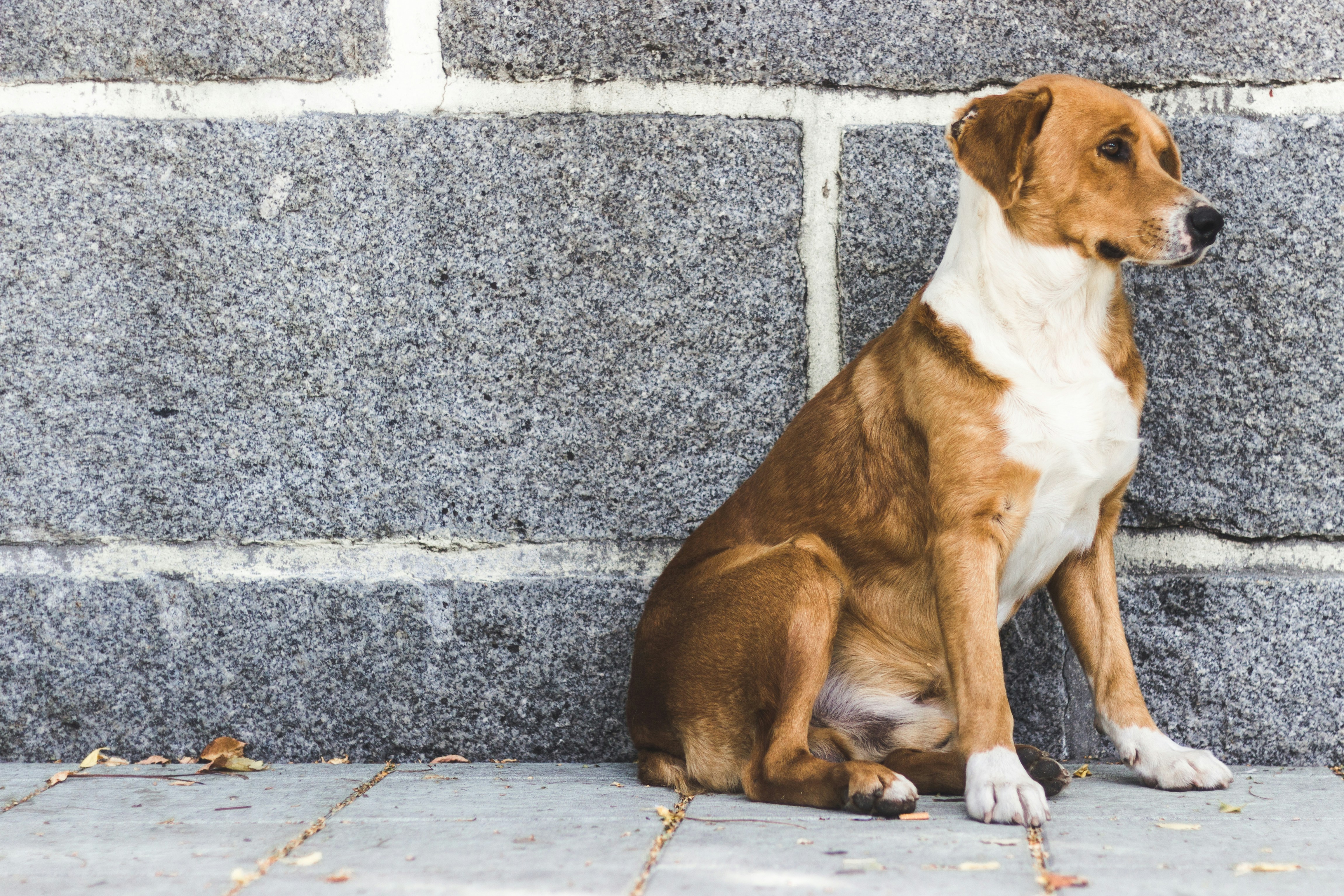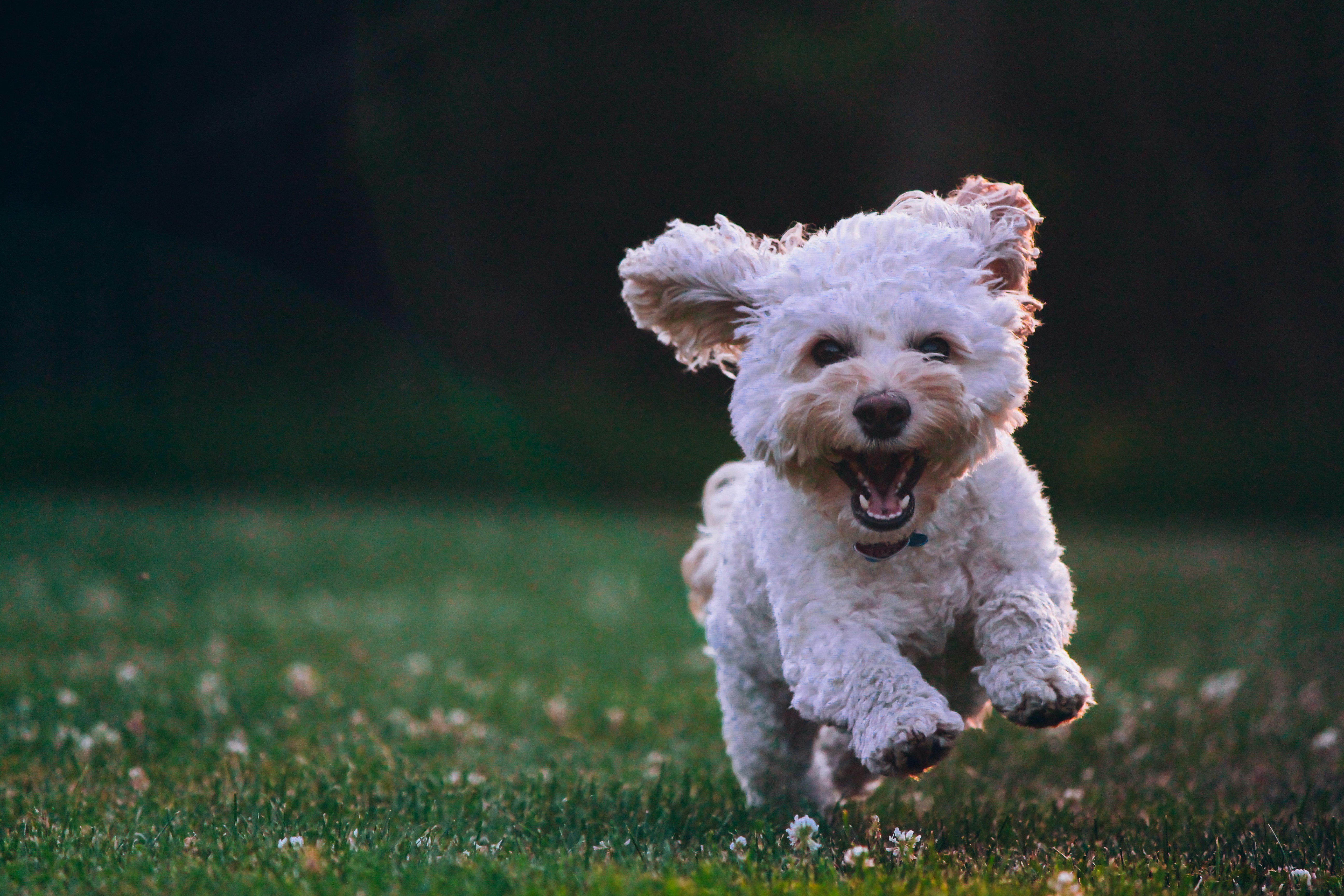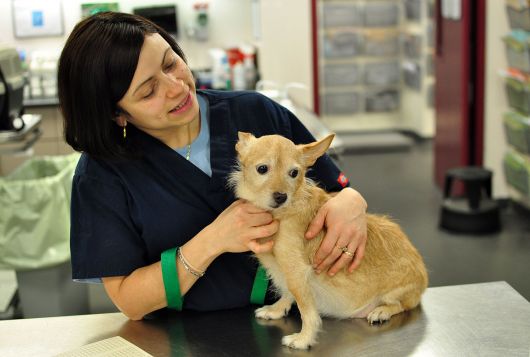When caring for an abandoned dog, one of the first things to consider is their physical health. Many abandoned dogs have been neglected or mistreated, so it’s important to take them to a veterinarian for a thorough examination. The vet will be able to assess their overall health, check for any underlying medical conditions, and provide necessary vaccinations and treatments.
In addition to physical health, it’s crucial to address the emotional well-being of an abandoned dog. These dogs may have experienced trauma or abandonment, which can lead to anxiety or behavioral issues. Patience and understanding are key when helping them adjust to their new environment.
Creating a safe and comfortable space for your new companion is essential. Provide them with a cozy bed, food and water bowls, and plenty of toys to keep them entertained. It’s also important to establish a routine for feeding, exercise, and bathroom breaks, as this will help them feel secure and establish trust.
When it comes to feeding, it’s important to choose high-quality dog food that meets their specific nutritional needs. Consult with your veterinarian to determine the best diet for your dog based on their age, size, and any existing health conditions. Regular exercise is also crucial for their physical and mental well-being, so make sure to incorporate daily walks or playtime into their routine.
Training is an essential part of caring for an abandoned dog. Many of these dogs may not have had any previous training or socialization, so it’s important to be patient and consistent. Positive reinforcement techniques, such as rewards and praise, are highly effective in teaching them basic commands and proper behavior.
Lastly, don’t forget the importance of socialization. Exposing your abandoned dog to new people, animals, and environments can help them build confidence and reduce anxiety. Gradually introduce them to new experiences, and always monitor their reactions to ensure their safety and well-being.
Caring for an abandoned dog can be a rewarding experience, but it requires time, patience, and dedication. By providing them with the love and care they deserve, you can help them overcome their past and create a bright future in their new forever home.
1. Establish a Safe and Comfortable Environment
The first step in caring for an abandoned dog is to create a safe and comfortable environment for them. This includes providing a designated sleeping area, such as a cozy dog bed or crate, where they can retreat and feel secure. Make sure to remove any potential hazards or toxic substances from their surroundings, and secure any loose wires or objects that they may chew on.
It’s also important to establish a routine and set boundaries within your home. This will help the dog feel more secure and understand what is expected of them. Providing them with a quiet space where they can relax and decompress is also essential, especially during the initial adjustment period.
Creating a safe and comfortable environment goes beyond just physical aspects. It also involves creating an emotional space where the dog feels loved and supported. Abandoned dogs often come from traumatic experiences, so it’s crucial to be patient and understanding as they adjust to their new surroundings. Building trust takes time, and it’s important to give the dog space and allow them to approach you at their own pace.
In addition to providing a designated sleeping area, consider creating a safe space where the dog can feel secure when you’re not home. This could be a specific room or area in the house where they have access to food, water, and toys. By providing a secure space, you can help alleviate any anxiety the dog may feel when left alone.
Establishing a routine is also vital for an abandoned dog’s well-being. Dogs thrive on predictability, so having a consistent schedule for feeding, exercise, and playtime can help them feel more comfortable and secure. This routine will also help in house-training the dog and teaching them basic commands.
Setting boundaries within your home is essential for the dog’s safety and well-being. This includes establishing rules about where the dog is allowed to go, what furniture they can access, and any behavior expectations. Consistency is key when enforcing these boundaries, and positive reinforcement techniques should be used to reward good behavior.
During the initial adjustment period, it’s important to provide the dog with a quiet space where they can relax and decompress. This could be a separate room or a designated area in the house where they can retreat when they need some alone time. This space should be equipped with comfortable bedding, toys, and water to ensure the dog feels safe and secure.
Overall, creating a safe and comfortable environment for an abandoned dog involves both physical and emotional aspects. By providing a designated sleeping area, establishing a routine, setting boundaries, and offering a quiet space for relaxation, you can help the dog feel secure and loved in their new home.
2. Consult a Veterinarian
When caring for an abandoned dog, it is crucial to schedule a visit to the veterinarian as soon as possible. The veterinarian will be able to assess the dog’s overall health and provide necessary vaccinations or treatments. They can also check for any underlying medical conditions that may require attention.
During the visit, discuss the dog’s history and any behavioral issues they may have exhibited. This will help the veterinarian provide tailored advice on how to address these issues and ensure the dog’s well-being. Additionally, ask about the appropriate diet and exercise routine for your dog’s specific needs.
The veterinarian will perform a thorough physical examination of the dog, checking their body condition, coat, eyes, ears, teeth, and overall mobility. They may also conduct blood tests or X-rays to get a more comprehensive understanding of the dog’s health.
If the dog has not been spayed or neutered, the veterinarian may recommend this procedure to prevent unwanted pregnancies and reduce the risk of certain diseases. They will also discuss the benefits of microchipping the dog for identification purposes.
Furthermore, the veterinarian can provide guidance on parasite prevention and control. They will recommend appropriate flea, tick, and heartworm preventatives, as well as deworming medications. It is important to follow their recommendations to keep the dog protected from these common health issues.
During the consultation, feel free to ask any questions or express any concerns you may have. The veterinarian is there to help and provide the best care possible for your newly adopted dog. They can offer advice on training, socialization, and any other aspect of dog ownership that you may need assistance with.
After the initial visit, it is important to follow up with regular check-ups and vaccinations as recommended by the veterinarian. This will ensure that your dog remains healthy and receives the necessary preventive care throughout their life.
3. Provide Proper Nutrition
Feeding your abandoned dog a nutritious and balanced diet is crucial for their overall health and well-being. Consult with your veterinarian to determine the appropriate type and amount of food for your dog based on their age, size, and any specific dietary requirements they may have.
Ensure that the dog has access to fresh water at all times and establish a regular feeding schedule. This will help them develop a sense of routine and security. Dogs, especially those who have been abandoned, thrive on consistency and structure. By providing them with regular meals, you are not only nourishing their body but also giving them a sense of stability and predictability.
Avoid feeding them table scraps or foods that are toxic to dogs, such as chocolate, onions, or grapes. While it may be tempting to share your meals with your new furry friend, it is important to remember that their digestive systems are different from ours. Certain foods that are safe for humans can be harmful to dogs and may even be life-threatening. Stick to a well-balanced dog food that meets all their nutritional needs.
Monitor their weight and adjust their diet accordingly to maintain a healthy body condition. Just like humans, dogs can become overweight or underweight if their diet is not properly managed. Regularly check their body condition score, which is a way to assess their overall body condition based on factors such as rib visibility and waist definition. If you notice any changes in their weight, consult with your veterinarian to make the necessary adjustments to their diet to ensure they stay in optimal health.
4. Exercise and Mental Stimulation
Regular exercise is vital for the physical and mental well-being of your abandoned dog. Provide them with daily opportunities for exercise, such as walks, playtime, or interactive toys. This will help them release energy, maintain a healthy weight, and prevent behavioral problems that may arise due to boredom or pent-up energy.
In addition to physical exercise, mental stimulation is equally important. Engage your dog in activities that challenge their mind, such as puzzle toys or training sessions. This will help keep them mentally sharp and prevent boredom, which can lead to destructive behaviors.
When it comes to exercise, it’s important to tailor the activities to your dog’s age, breed, and physical abilities. For example, a young and energetic Labrador Retriever may require longer walks or more vigorous play sessions compared to an older and less active Chihuahua. Consider consulting with a veterinarian or a professional dog trainer to determine the appropriate exercise regimen for your abandoned dog.
When taking your dog for walks, try to vary the routes and environments to provide them with new sights, sounds, and smells. This will keep their senses stimulated and prevent monotony. Additionally, consider incorporating interactive toys into your dog’s playtime. These toys can challenge their problem-solving skills and provide mental stimulation even when you’re not around.
Training sessions are another excellent way to engage your abandoned dog’s mind. Teach them basic commands such as sit, stay, and come, as well as more advanced tricks. Not only will this provide mental stimulation, but it will also strengthen the bond between you and your dog and improve their overall obedience.
Remember to be patient and consistent with both exercise and mental stimulation. It may take time for your abandoned dog to adjust to their new routine and learn new commands or tricks. Reward their efforts with praise, treats, or playtime to reinforce positive behavior.
In summary, regular exercise and mental stimulation are crucial for the well-being of your abandoned dog. By providing them with opportunities to release energy and challenge their mind, you can help prevent behavioral problems and ensure a happy and healthy life for your furry friend.
5. Patience and Consistency
When caring for an abandoned dog, it’s essential to approach the process with patience and consistency. Understand that they may have had traumatic experiences in the past, which can affect their behavior and trust in humans. Allow them time to adjust to their new surroundings and build trust with you.
Consistency is key when it comes to training and establishing routines. Use positive reinforcement techniques to reward desired behaviors and be patient with any setbacks or challenges that may arise. Seek professional help if needed, such as a dog trainer or behaviorist, to address any specific behavioral issues.
Patience is crucial when working with an abandoned dog, as it can take time for them to overcome their past and feel comfortable in their new environment. Remember that every dog is different and will require varying amounts of time and support to fully adjust. Some dogs may be more resilient and adapt quickly, while others may take longer to trust and feel secure.
During this adjustment period, it’s important to provide a calm and stable environment for the dog. Avoid sudden changes or disruptions that may cause additional stress. Stick to a consistent daily routine, including regular feeding times, exercise, and training sessions. This routine will not only help the dog feel more secure but also assist in their overall behavior and development.
Training an abandoned dog requires patience and understanding. Start with basic obedience commands like sit, stay, and come, using positive reinforcement techniques such as treats and praise. Be consistent with your training sessions, keeping them short and frequent to maintain the dog’s focus and interest.
It’s important to note that abandoned dogs may exhibit certain behavioral issues due to their past experiences. These can include fear, anxiety, aggression, or separation anxiety. If you notice any concerning behaviors, it’s crucial to seek professional help from a dog trainer or behaviorist who specializes in working with rescue dogs.
Working with a professional can provide you with the guidance and support needed to address these issues effectively. They can develop a customized training plan tailored to your dog’s specific needs and help you understand the underlying causes of their behavior. With time, patience, and consistency, you can help an abandoned dog overcome their past and thrive in their new forever home.
6. Socialization
Proper socialization is essential for the well-being of an abandoned dog. Gradually introduce them to new people, animals, and environments in a controlled and positive manner. This will help them build confidence, reduce anxiety, and develop positive associations with new experiences.
Expose your dog to various situations, such as walks in different environments, visits to dog-friendly parks, or supervised playdates with other well-behaved dogs. Always prioritize their safety and comfort, and closely monitor their interactions to ensure positive experiences.
Additionally, consider enrolling your dog in a reputable obedience training class. These classes not only provide valuable training exercises but also expose your dog to different people and dogs in a structured setting. This can be particularly beneficial for abandoned dogs who may have missed out on early socialization opportunities.
During the socialization process, it’s important to be patient and understanding. Abandoned dogs may have had traumatic experiences in the past, and it may take time for them to feel comfortable in new situations. Allow them to set the pace and provide plenty of positive reinforcement, praise, and treats for their brave efforts.
Furthermore, seek opportunities for positive exposure to different sounds, sights, and smells. For example, take your dog on car rides, introduce them to different types of flooring, and provide them with puzzle toys that stimulate their senses. This will help them become more adaptable and confident in various environments.
Remember, socialization is an ongoing process that should continue throughout your dog’s life. It’s important to regularly expose them to new experiences and reinforce positive behaviors. By investing time and effort into socializing your abandoned dog, you can help them overcome their past and thrive in their new home.
7. Grooming and Hygiene
Maintaining proper grooming and hygiene is an important aspect of caring for an abandoned dog. Regularly brushing their coat not only keeps it looking clean and shiny but also helps to prevent matting and remove any loose fur. This is especially important for long-haired breeds, as their fur tends to tangle easily. By brushing them regularly, you can prevent painful matting and keep their coat healthy.
In addition to brushing, you may also need to trim your dog’s nails regularly. Overgrown nails can be uncomfortable for your dog and may even cause them pain. Trimming their nails not only helps to keep them at a comfortable length but also prevents them from breaking or splitting, which can be painful for your furry friend.
Cleaning your dog’s ears is another important part of their grooming routine. Dogs with floppy ears are particularly prone to ear infections, as their ears provide a warm and moist environment for bacteria and yeast to grow. Regularly cleaning their ears can help prevent these infections and ensure that your dog’s ears stay healthy and free from any unpleasant odors.
Lastly, brushing your dog’s teeth is crucial for their overall health. Just like humans, dogs can develop dental problems such as tartar buildup, gum disease, and tooth decay. By brushing their teeth regularly, you can prevent these issues and keep their breath fresh. It’s important to use a toothbrush and toothpaste specifically designed for dogs, as human products can be harmful to them.
Introducing grooming activities gradually is essential, especially if your dog is not used to being handled or groomed. Start by getting them comfortable with being touched and handled in a gentle and positive manner. Use treats and praise to reward them for allowing you to touch their paws, ears, and mouth. Once they are comfortable with being handled, you can gradually introduce the different grooming activities.
If you are unsure about how to properly groom your dog or if you find it challenging, it is always a good idea to consult a professional groomer for guidance. They can provide you with valuable tips and techniques specific to your dog’s breed and coat type. Additionally, a professional groomer can help you with more advanced grooming tasks such as breed-specific haircuts or styling, ensuring that your dog looks and feels their best.
8. Love and Affection
Perhaps the most important aspect of caring for an abandoned dog is providing them with love and affection. Show them patience, understanding, and kindness as they adjust to their new home. Spend quality time with them, engage in play, and offer plenty of positive reinforcement and praise.
Building a strong bond with your dog will not only enhance their well-being but also create a trusting and loving relationship. Remember, abandoned dogs often require extra time and attention to heal from their past experiences, so be prepared to invest the necessary effort and care.
One way to express your love and affection for your abandoned dog is through physical touch. Dogs crave physical contact and it can be incredibly soothing for them. Gently petting your dog, giving them belly rubs, or simply sitting close to them can create a sense of security and comfort. Physical touch releases oxytocin, the hormone associated with bonding and love, in both humans and dogs, strengthening the emotional connection between you and your furry friend.
In addition to physical touch, verbal expressions of love and affection are also important. Dogs are highly attuned to human voices and respond positively to kind and gentle words. Talk to your dog in a calm and soothing tone, using words of encouragement and praise. Let them know how much you appreciate them and how happy you are to have them in your life. Your words can have a profound impact on their emotional well-being and can help them feel safe and loved.
Furthermore, actions speak louder than words. Show your love and affection for your abandoned dog through your actions. Take them on regular walks, play games with them, and provide them with stimulating toys and activities. These actions not only provide physical exercise and mental stimulation but also demonstrate your commitment to their happiness and well-being.
Lastly, love and affection should be consistent and ongoing. Abandoned dogs may have experienced neglect or abuse in the past, and it is crucial to show them that they can trust you and rely on you for love and care. Make sure to prioritize their emotional needs and provide them with a safe and secure environment where they can thrive.








